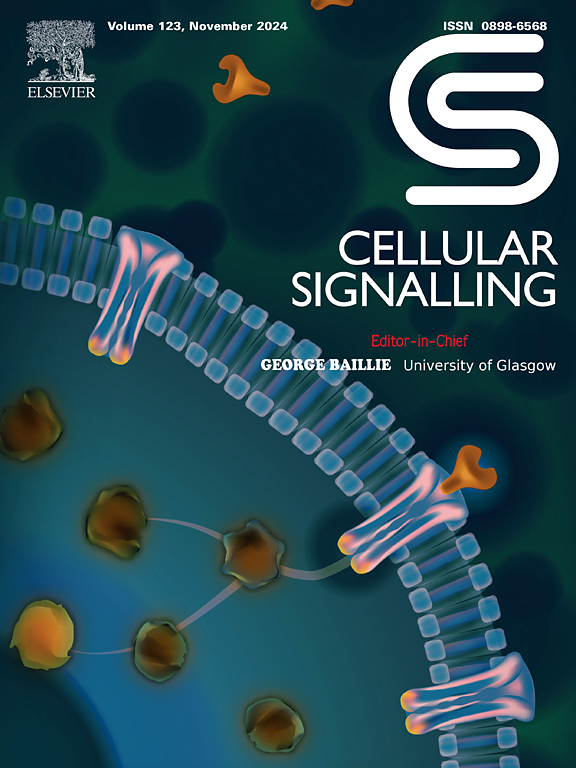E3泛素连接酶TRIM7简介
IF 4.4
2区 生物学
Q2 CELL BIOLOGY
引用次数: 0
摘要
TRIM7是E3泛素连接酶家族的一员,自发现以来在不同的研究领域受到了极大的关注。该酶通过泛素化介导多种蛋白质底物的降解,在各种病理生理过程中起着不可或缺的作用。本文系统综述了目前对TRIM7蛋白结构和生物学功能的研究进展。在结构上,TRIM7具有一个保守的RBCC基元(RING, B-box和coil -coil结构域),加上一个可变的c -末端区域,决定了底物的特异性。在感染环境下,TRIM7是病原体特异性调控所必需的,根据病原体类型,它可能促进宿主防御,也可能促进病毒发病,从而发挥矛盾的作用。在肿瘤学中,TRIM7通过调节肿瘤转移、细胞凋亡和肿瘤免疫表现出肿瘤抑制特性。此外,它可能作为一种可靠的生物标志物来监测特发性肺纤维化的进展,并抑制动脉粥样硬化的进展。综上所述,TRIM7在不同的病理生理过程中发挥关键作用,可能是某些人类疾病的预测和治疗靶点。本文章由计算机程序翻译,如有差异,请以英文原文为准。
A brief overview of the E3 ubiquitin ligase: TRIM7
TRIM7, a member of the E3 ubiquitin ligase family, has garnered significant attentions in different research fields since its discovery. This enzyme plays indispensable roles in various pathophysiological processes through ubiquitination-mediated degradation of diverse protein substrates. This review systematically summarizes the current knowledge on the protein structure and biological functions of TRIM7. Structurally, TRIM7 features a conserved RBCC motif (RING, B-box, and coiled-coil domains) coupled with a variable C-terminal region that dictates the substrate specificity. In infectious contexts, TRIM7 is required for the pathogen-specific regulation, and exerts paradoxical effects by either promoting host defense or facilitating viral pathogenesis depending on pathogen type. Within oncology, TRIM7 manifests tumor-suppressive properties through regulating metastasis, apoptosis, and tumor immunology. In addition, it might serve as a reliable biomarker for monitoring the progression of idiopathic pulmonary fibrosis and also inhibits the progression of atherosclerosis. In summary, TRIM7 plays critical roles in different pathophysiological processes, and it might be a predictive and therapeutic target in certain human diseases.
求助全文
通过发布文献求助,成功后即可免费获取论文全文。
去求助
来源期刊

Cellular signalling
生物-细胞生物学
CiteScore
8.40
自引率
0.00%
发文量
250
审稿时长
27 days
期刊介绍:
Cellular Signalling publishes original research describing fundamental and clinical findings on the mechanisms, actions and structural components of cellular signalling systems in vitro and in vivo.
Cellular Signalling aims at full length research papers defining signalling systems ranging from microorganisms to cells, tissues and higher organisms.
 求助内容:
求助内容: 应助结果提醒方式:
应助结果提醒方式:


